Chuan Zhang
Sherman
BESA: Boosting Encoder Stealing Attack with Perturbation Recovery
Jun 05, 2025Abstract:To boost the encoder stealing attack under the perturbation-based defense that hinders the attack performance, we propose a boosting encoder stealing attack with perturbation recovery named BESA. It aims to overcome perturbation-based defenses. The core of BESA consists of two modules: perturbation detection and perturbation recovery, which can be combined with canonical encoder stealing attacks. The perturbation detection module utilizes the feature vectors obtained from the target encoder to infer the defense mechanism employed by the service provider. Once the defense mechanism is detected, the perturbation recovery module leverages the well-designed generative model to restore a clean feature vector from the perturbed one. Through extensive evaluations based on various datasets, we demonstrate that BESA significantly enhances the surrogate encoder accuracy of existing encoder stealing attacks by up to 24.63\% when facing state-of-the-art defenses and combinations of multiple defenses.
Large Language Model-driven Security Assistant for Internet of Things via Chain-of-Thought
May 08, 2025Abstract:The rapid development of Internet of Things (IoT) technology has transformed people's way of life and has a profound impact on both production and daily activities. However, with the rapid advancement of IoT technology, the security of IoT devices has become an unavoidable issue in both research and applications. Although some efforts have been made to detect or mitigate IoT security vulnerabilities, they often struggle to adapt to the complexity of IoT environments, especially when dealing with dynamic security scenarios. How to automatically, efficiently, and accurately understand these vulnerabilities remains a challenge. To address this, we propose an IoT security assistant driven by Large Language Model (LLM), which enhances the LLM's understanding of IoT security vulnerabilities and related threats. The aim of the ICoT method we propose is to enable the LLM to understand security issues by breaking down the various dimensions of security vulnerabilities and generating responses tailored to the user's specific needs and expertise level. By incorporating ICoT, LLM can gradually analyze and reason through complex security scenarios, resulting in more accurate, in-depth, and personalized security recommendations and solutions. Experimental results show that, compared to methods relying solely on LLM, our proposed LLM-driven IoT security assistant significantly improves the understanding of IoT security issues through the ICoT approach and provides personalized solutions based on the user's identity, demonstrating higher accuracy and reliability.
MFA-Net: Multi-Scale feature fusion attention network for liver tumor segmentation
May 07, 2024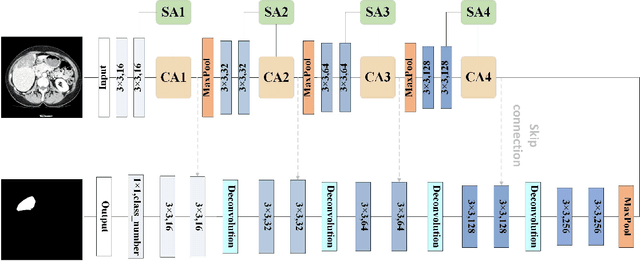

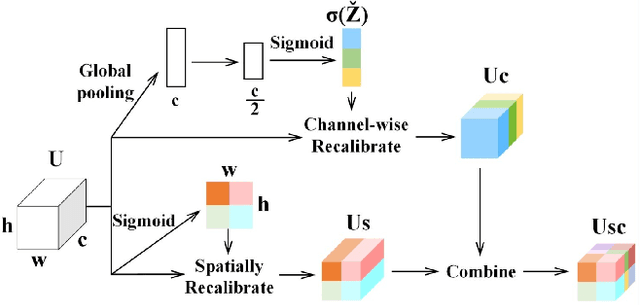

Abstract:Segmentation of organs of interest in medical CT images is beneficial for diagnosis of diseases. Though recent methods based on Fully Convolutional Neural Networks (F-CNNs) have shown success in many segmentation tasks, fusing features from images with different scales is still a challenge: (1) Due to the lack of spatial awareness, F-CNNs share the same weights at different spatial locations. (2) F-CNNs can only obtain surrounding information through local receptive fields. To address the above challenge, we propose a new segmentation framework based on attention mechanisms, named MFA-Net (Multi-Scale Feature Fusion Attention Network). The proposed framework can learn more meaningful feature maps among multiple scales and result in more accurate automatic segmentation. We compare our proposed MFA-Net with SOTA methods on two 2D liver CT datasets. The experimental results show that our MFA-Net produces more precise segmentation on images with different scales.
On the Road to 6G: Visions, Requirements, Key Technologies and Testbeds
Feb 28, 2023Abstract:Fifth generation (5G) mobile communication systems have entered the stage of commercial development, providing users with new services and improved user experiences as well as offering a host of novel opportunities to various industries. However, 5G still faces many challenges. To address these challenges, international industrial, academic, and standards organizations have commenced research on sixth generation (6G) wireless communication systems. A series of white papers and survey papers have been published, which aim to define 6G in terms of requirements, application scenarios, key technologies, etc. Although ITU-R has been working on the 6G vision and it is expected to reach a consensus on what 6G will be by mid-2023, the related global discussions are still wide open and the existing literature has identified numerous open issues. This paper first provides a comprehensive portrayal of the 6G vision, technical requirements, and application scenarios, covering the current common understanding of 6G. Then, a critical appraisal of the 6G network architecture and key technologies is presented. Furthermore, existing testbeds and advanced 6G verification platforms are detailed for the first time. In addition, future research directions and open challenges are identified for stimulating the on-going global debate. Finally, lessons learned to date concerning 6G networks are discussed.
Bridging the Emotional Semantic Gap via Multimodal Relevance Estimation
Feb 03, 2023



Abstract:Human beings have rich ways of emotional expressions, including facial action, voice, and natural languages. Due to the diversity and complexity of different individuals, the emotions expressed by various modalities may be semantically irrelevant. Directly fusing information from different modalities may inevitably make the model subject to the noise from semantically irrelevant modalities. To tackle this problem, we propose a multimodal relevance estimation network to capture the relevant semantics among modalities in multimodal emotions. Specifically, we take advantage of an attention mechanism to reflect the semantic relevance weights of each modality. Moreover, we propose a relevant semantic estimation loss to weakly supervise the semantics of each modality. Furthermore, we make use of contrastive learning to optimize the similarity of category-level modality-relevant semantics across different modalities in feature space, thereby bridging the semantic gap between heterogeneous modalities. In order to better reflect the emotional state in the real interactive scenarios and perform the semantic relevance analysis, we collect a single-label discrete multimodal emotion dataset named SDME, which enables researchers to conduct multimodal semantic relevance research with large category bias. Experiments on continuous and discrete emotion datasets show that our model can effectively capture the relevant semantics, especially for the large deviations in modal semantics. The code and SDME dataset will be publicly available.
Automatic Hybrid-Precision Quantization for MIMO Detectors
Aug 11, 2022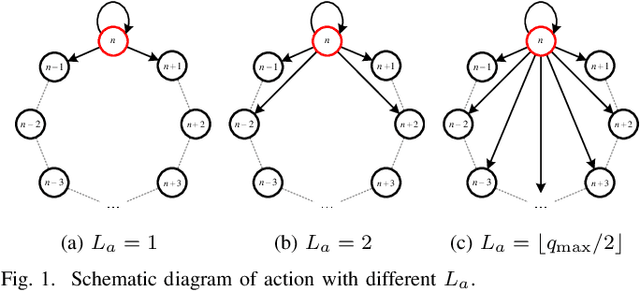
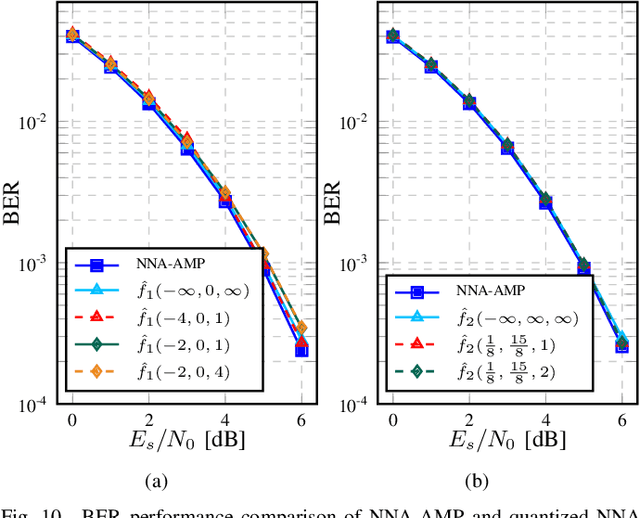
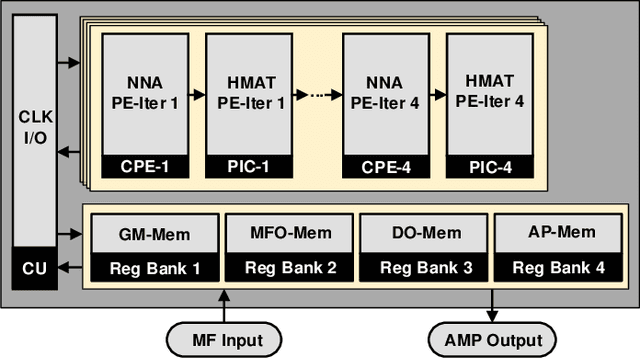

Abstract:In the design of wireless systems, quantization plays a critical role in hardware, which directly affects both area efficiency and energy efficiency. Being an enabling technique, the wide applications of multiple-input multiple-output (MIMO) heavily relies on efficient implementations balancing both performance and complexity. However, most of the existing detectors uniformly quantize all variables, resulting in high redundancy and low flexibility. Requiring both expertise and efforts, an in-depth tailored quantization usually asks for prohibitive costs and is not considered by conventional MIMO detectors. In this paper, a general framework named the automatic hybrid-precision quantization (AHPQ) is proposed with two parts: integral quantization determined by probability density function (PDF), and fractional quantization by deep reinforcement learning (DRL). Being automatic, AHPQ demonstrates high efficiency in figuring out good quantizations for a set of algorithmic parameters. For the approximate message passing (AMP) detector, AHPQ achieves up to $58.7\%$ lower average bitwidth than the unified quantization (UQ) one with almost no performance sacrifice. The feasibility of AHPQ has been verified by implementation with $65$ nm CMOS technology. Compared with its UQ counterpart, AHPQ exhibits $2.97\times$ higher throughput-to-area ratio (TAR) with $19.3\%$ lower energy dissipation. Moreover, by node compression and strength reduction, the AHPQ detector outperforms the state-of-the-art (SOA) in both throughput ($17.92$ Gb/s) and energy efficiency ($7.93$ pJ/b). The proposed AHPQ framework is also applicable for other digital signal processing algorithms.
Belief-selective Propagation Detection for MIMO Systems
Jun 27, 2022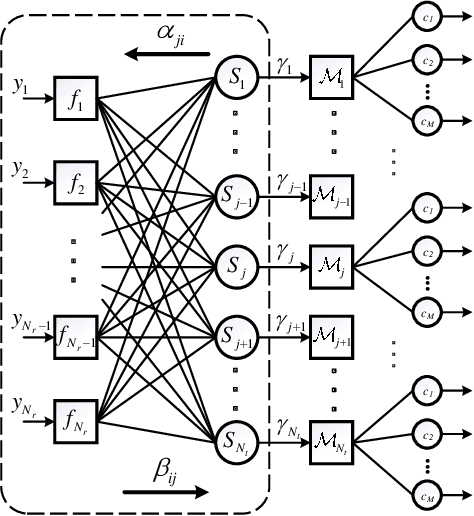

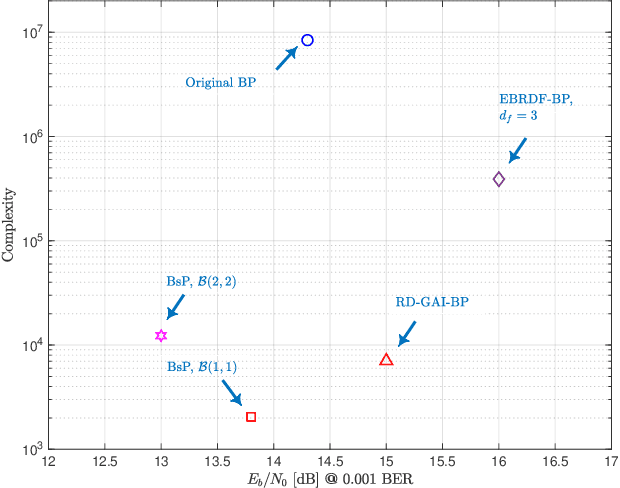
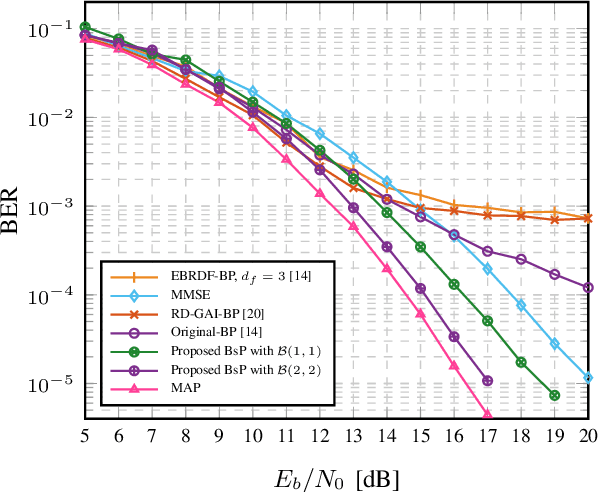
Abstract:Compared to the linear MIMO detectors, the Belief Propagation (BP) detector has shown greater capabilities in achieving near optimal performance and better nature to iteratively cooperate with channel decoders. Aiming at real applications, recent works mainly fall into the category of reducing the complexity by simplified calculations, at the expense of performance sacrifice. However, the complexity is still unsatisfactory with exponentially increasing complexity or required exponentiation operations. Furthermore, due to the inherent loopy structure, the existing BP detectors persistently encounter error floor in high signal-to-noise ratio (SNR) region, which becomes even worse with calculation approximation. This work aims at a revised BP detector, named {Belief-selective Propagation (BsP)} detector by selectively utilizing the \emph{trusted} incoming messages with sufficiently large \textit{a priori} probabilities for updates. Two proposed strategies: symbol-based truncation (ST) and edge-based simplification (ES) squeeze the complexity (orders lower than the Original-BP), while greatly relieving the error floor issue over a wide range of antenna and modulation combinations. For the $16$-QAM $8 \times 4$ MIMO system, the $\mathcal{B}(1,1)$ {BsP} detector achieves more than $4$\,dB performance gain (@$\text{BER}=10^{-4}$) with roughly $4$ orders lower complexity than the Original-BP detector. Trade-off between performance and complexity towards different application requirement can be conveniently obtained by configuring the ST and ES parameters.
Supervised Contrastive CSI Representation Learning for Massive MIMO Positioning
Apr 27, 2022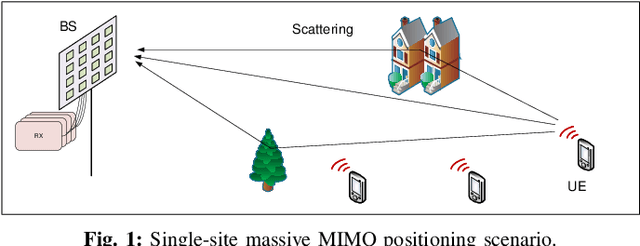
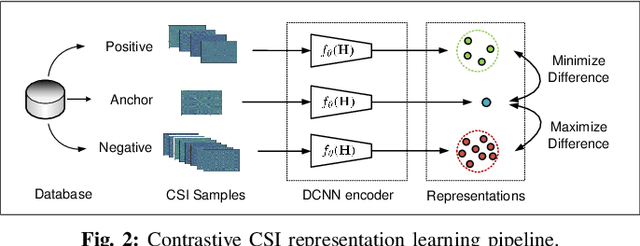

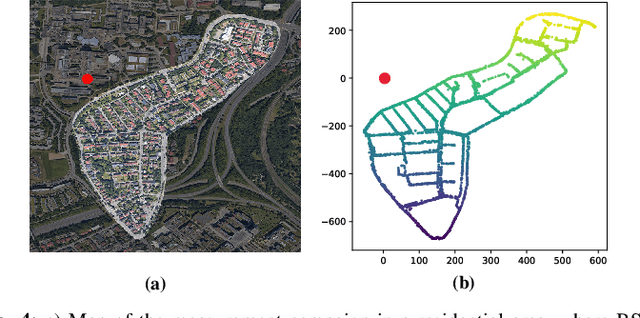
Abstract:Similarity metric is crucial for massive MIMO positioning utilizing channel state information~(CSI). In this letter, we propose a novel massive MIMO CSI similarity learning method via deep convolutional neural network~(DCNN) and contrastive learning. A contrastive loss function is designed considering multiple positive and negative CSI samples drawn from a training dataset. The DCNN encoder is trained using the loss so that positive samples are mapped to points close to the anchor's encoding, while encodings of negative samples are kept away from the anchor's in the representation space. Evaluation results of fingerprint-based positioning on a real-world CSI dataset show that the learned similarity metric improves positioning accuracy significantly compared with other known state-of-the-art methods.
A Novel Full-Polarization SAR Images Ship Detector Based on the Scattering Mechanisms and the Wave Polarization Anisotropy
Dec 07, 2021
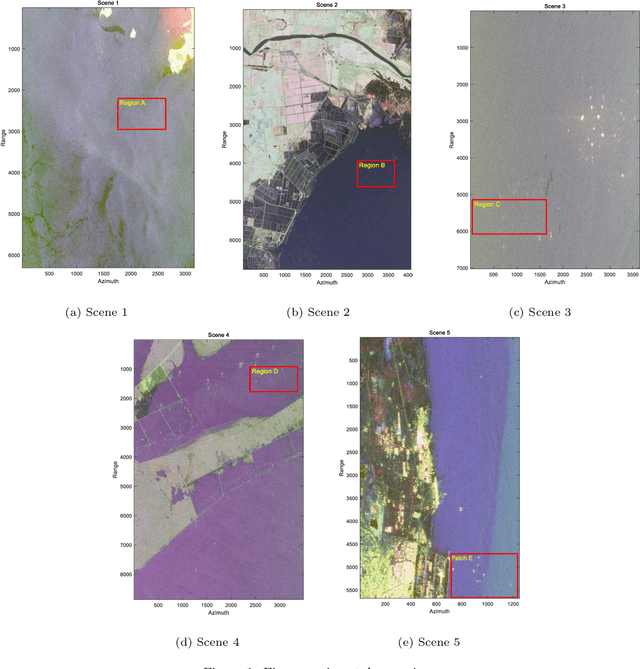
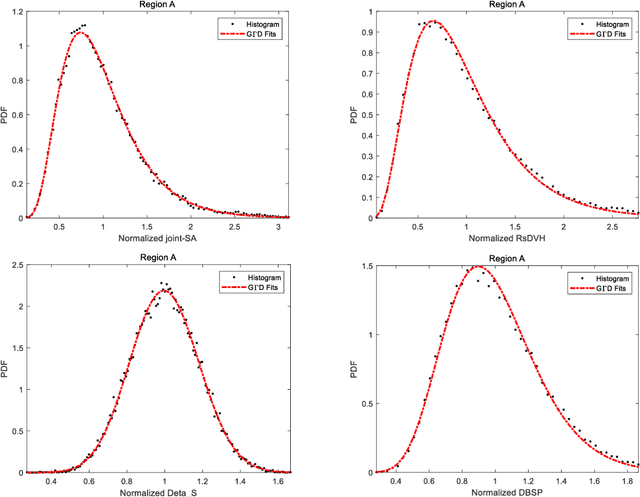

Abstract:Synthetic aperture radar (SAR) is considered being a good option for earth observation with its unique advantages. In this paper, we proposed an adaptive ship detector using full-polarization SAR images. First, by thoroughly investigating the scattering characteristics between ships and their background, and the wave polarization anisotropy, a novel ship detector is proposed by jointing the two characteristics, named Scattering-Anisotropy joint (joint-SA). Based on the theoretical analysis, we showed that the joint-SA is an effective physical quantity to show the difference between the ship and its background, and thus joint-SA can be used for ship detection of full-polarization image data. Second, the generalized Gamma distribution was used to characterize the joint-SA statistics of sea clutter with a large range of homogeneity. As a result, an adaptive constant false alarm rate (CFAR) method was implemented based on the joint-SA. Finally, RADARSAT-2 and GF-3 data in C-band and ALOS data in L-band are used for verification. We tested on five datasets, and the experimental results verify the correctness and superiority of the constant false alarm rate (CFAR) method based on the joint-SA. In addition, the experimental results also showed that the signal-clutter ratio (SCR) of the proposed ship detector joint-SA (33.17 dB, 35.98 dB, 57.25 dB) is better than that of DBSP (8.92 dB, 3.43 dB, 25.40 dB) and RsDVH (17.28 dB, 11.17 dB, 54.55 dB). More importantly, the proposed detector joint-SA has higher detection accuracy and a lower false alarm rate.
Soft-Output Joint Channel Estimation and Data Detection using Deep Unfolding
Dec 01, 2021

Abstract:We propose a novel soft-output joint channel estimation and data detection (JED) algorithm for multiuser (MU) multiple-input multiple-output (MIMO) wireless communication systems. Our algorithm approximately solves a maximum a-posteriori JED optimization problem using deep unfolding and generates soft-output information for the transmitted bits in every iteration. The parameters of the unfolded algorithm are computed by a hyper-network that is trained with a binary cross entropy (BCE) loss. We evaluate the performance of our algorithm in a coded MU-MIMO system with 8 basestation antennas and 4 user equipments and compare it to state-of-the-art algorithms separate channel estimation from soft-output data detection. Our results demonstrate that our JED algorithm outperforms such data detectors with as few as 10 iterations.
 Add to Chrome
Add to Chrome Add to Firefox
Add to Firefox Add to Edge
Add to Edge